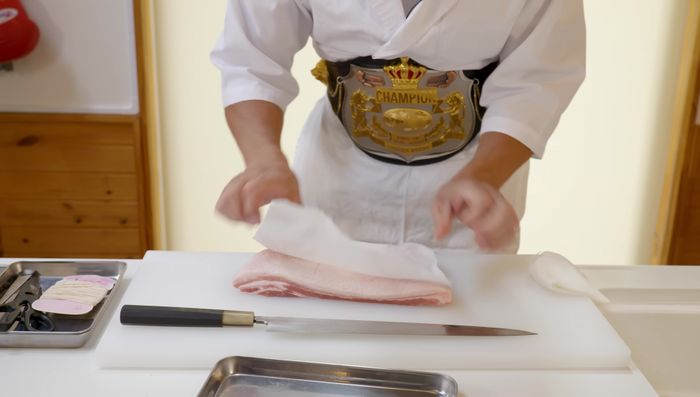Cha shu pork, the melt-in-your-mouth braised pork belly that crowns countless bowls of ramen, is more than just a topping; it's a culinary experience. Its rich, savory flavor and tender texture are the result of a slow, deliberate braising process, transforming humble pork belly into a masterpiece of umami. This deeply satisfying dish, a staple of Japanese cuisine, is surprisingly accessible to home cooks, requiring only a few readily available ingredients and a generous amount of patience. The secret lies in the careful balance of sweet, savory, and fragrant elements that create an unforgettable depth of flavor.
Forget takeout – achieving restaurant-quality cha shu pork is within your reach. This guide will walk you through each step, from selecting the perfect cut of pork to achieving that perfect balance of tender meat and succulent fat. Ready to elevate your ramen game (or simply enjoy the most delicious pork you've ever tasted)? Let's dive into the detailed, step-by-step process of making perfect cha shu pork.
Tools Needed
- Saucepan
- Paper towel
- Fork
- Kitchen twine
- Frying pan
Ingredients
- Pork belly
- Paper towel
- Fork
- Kitchen twine
- Chopped ginger
- Cloves of garlic
- Green stems of Japanese negi (green onion)
- Water
- Japanese cooking sake: 100 milliliters
- Mirin: 100 milliliters
- Sugar: 4 tablespoons
- Soy sauce: 250 milliliters
- Half a chopped onion
Step-by-Step Instructions
Step 1. Prepare and Blanch the Pork Belly
- Remove any moisture from the pork belly with a paper towel. Trim any uneven parts if necessary.
- Stab both sides of the pork belly with a fork and make shallow slices down the non-fat side. This helps the meat absorb flavors.
- Roll up the pork belly tightly, with the least fatty end in the middle. Tie it securely with kitchen twine.
- Add the tied pork belly to a saucepan with enough water to cover it completely. Bring to a boil, then drain and rinse both the meat and the pan (yudekovosi).




Step 2. Simmer the Pork Belly
- Add chopped ginger, garlic, and negi to the rinsed saucepan. Return the pork belly, cover with water, and simmer for 90 minutes. Add a paper towel to the top to prevent overflowing.
- Remove the pork belly after 90 minutes. Measure out 500 milliliters of the cooking liquid.


Step 3. Braising and Flavor Infusion
- In a pot, combine sake, mirin, sugar, soy sauce, the reserved cooking liquid (500ml), and water (500ml). Simmer until the sugar dissolves.
- Add the pork belly and half a chopped onion to the sauce. Simmer on low heat for 40 minutes, turning the meat every 10 minutes. Add more water if the liquid evaporates too much.


Step 4. Sear and Glaze
- Remove the pork belly and remove the twine. Sear the pork belly in a frying pan over medium-high heat until the fat is nicely browned.
- Add two ladles of the sauce to the frying pan, allowing it to simmer and thicken. Coat the cha-shu in the sauce.


Read more: 15-Minute Japanese Curry Udon: Quick, Easy, & Delicious Weeknight Dinner
Tips
- Using a piece of paper towel over the top of the pan can help prevent overflowing while it boils.
- Turning the meat every 10 minutes ensures even cooking and flavor absorption.
Nutrition
- Calories: 600-800
- Fat: 40-60g
- Carbs: 20-30g
- Protein: 30-40g
FAQs
1. Can I use a different cut of pork for Cha Shu?
While pork belly is traditional, you can experiment with shoulder or butt. Just keep in mind that leaner cuts may require shorter braising times.
2. How long does Cha Shu pork keep in the refrigerator?
Properly stored in an airtight container, your Cha Shu will last for 3-4 days in the refrigerator.
3. What can I do with leftover Cha Shu pork?
It's delicious in rice bowls, sandwiches, or as a topping for noodles other than ramen. You can also shred it and add it to stir-fries.
Congratulations! You've now mastered the art of making perfect cha shu pork. With its rich flavor and tender texture, this incredible braised pork belly will elevate your ramen game to new heights. Enjoy the fruits of your labor and savor every bite!
